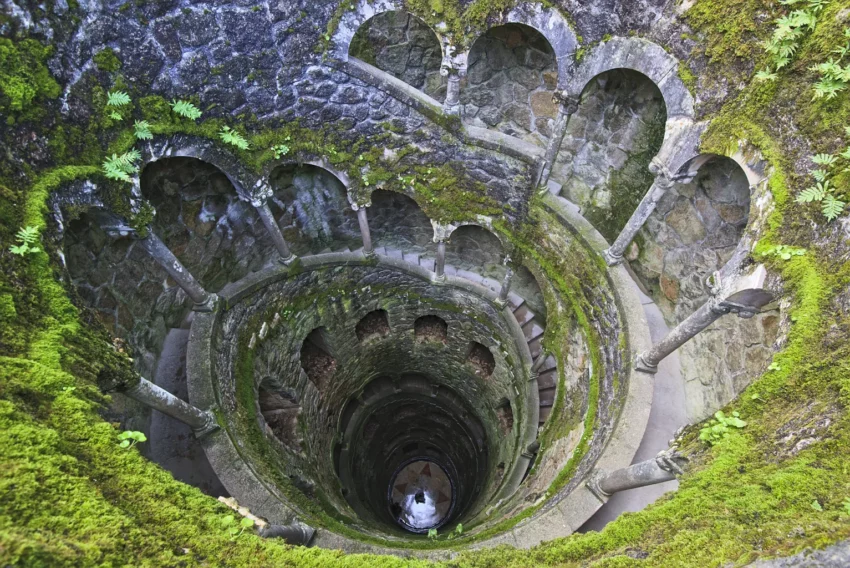The Initiation Wells of Quinta da Regaleira are a fascinating architectural and mystical feature located in Sintra, Portugal. These wells, resembling subterranean towers, are lined with stairs and were used for ceremonial purposes that included Tarot initiation rites. The property of Quinta da Regaleira is a decorative 20th-century residence that boasts a luxurious park featuring lakes, grottoes, wells, benches, fountains, and a vast array of exquisite constructions. The wells are connected by underground tunnels and include the ‘Initiation Well’ or ‘Inverted Tower,’ which plunges 27 meters into the earth. The beauty and enigmatic nature of these wells attract visitors from around the world, drawn to their symbolic features that hint at connections to the Knights Templar, the Masons, and alchemy.
Get your dose of History via Email
Historical Background of Initiation Wells of Quinta da Regaleira Portugal
The Initiation Wells of Quinta da Regaleira were discovered as part of the Quinta da Regaleira estate, which spans over four hectares. The estate was purchased in 1892 by Carvalho Monteiro, who was eager to build a bewildering place filled with symbols that reflected his interests and ideologies. With the assistance of Italian architect Luigi Manini, he recreated the 4-hectare estate. It features a palace, a chapel, and the enigmatic Initiation Wells. These wells were never used as water sources. Instead, they were used for secretive ceremonies.
The construction of the wells was part of the late 19th to early 20th-century Romanticism that swept through Europe. The Initiation Wells are believed to have been built specifically for Monteiro, who was fascinated by alchemy, Masonry, and the Rosicrucians. The property changed hands several times after Monteiro’s death. It was eventually acquired by the Sintra Town Hall in 1997. The estate was then opened to the public in 1998 and has since become a major tourist attraction.
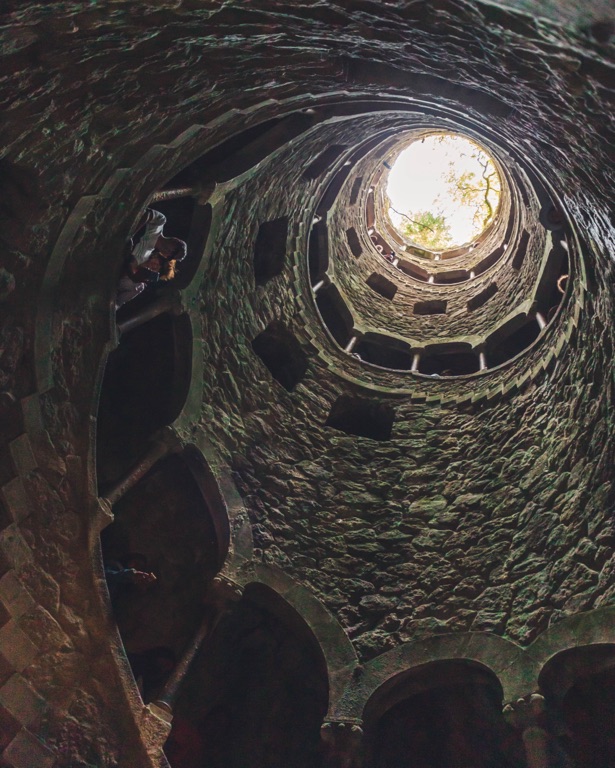
The Initiation Wells themselves are not ancient but are a creation of the turn of the 20th century. Their design mimics that of ancient initiation rites. The wells consist of two spiraling staircases that lead to various levels of the earth. They symbolize a journey of rebirth or the connection between the heavens and the underworld.
While the Initiation Wells were not the scene of any historically significant events, they have become an important cultural landmark. They offer insight into the esoteric interests of the period. The wells and the estate have been featured in various literary works and have inspired many with their mysterious allure.
The Quinta da Regaleira and its Initiation Wells are now a UNESCO World Heritage Site. They are recognized for their cultural significance and their representation of the Romantic architectural ideals of the era. The site continues to be a place of wonder and speculation, as well as a testament to the eclectic tastes of its former owner.
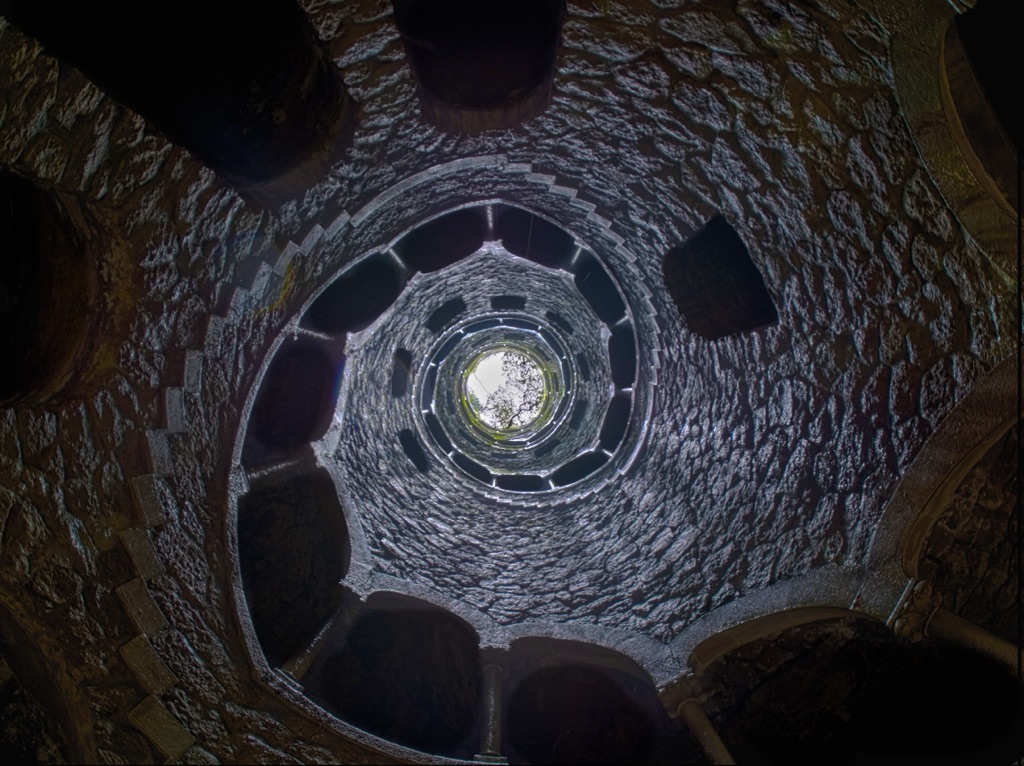
About Initiation Wells of Quinta da Regaleira Portugal
The Initiation Wells of Quinta da Regaleira are two wells on the estate that resemble underground towers lined with stairs. These wells are also known as ‘inverted towers,’ as they extend deep into the ground. The larger well contains a 27-meter spiral staircase with several small landings. The spacing of these landings, along with the number of steps in the stairs, are linked to Tarot mysticism and Masonic principles.
The design of the wells is rich with symbolic meaning. The larger well, known as the ‘Initiation Well,’ includes a mosaic floor at the bottom, which is adorned with a compass over a Knights Templar cross. This is a clear nod to the Order of the Knights Templar. The smaller well, called the ‘Unfinished Well,’ features a series of straight staircases connecting various ring-shaped floors to one another.
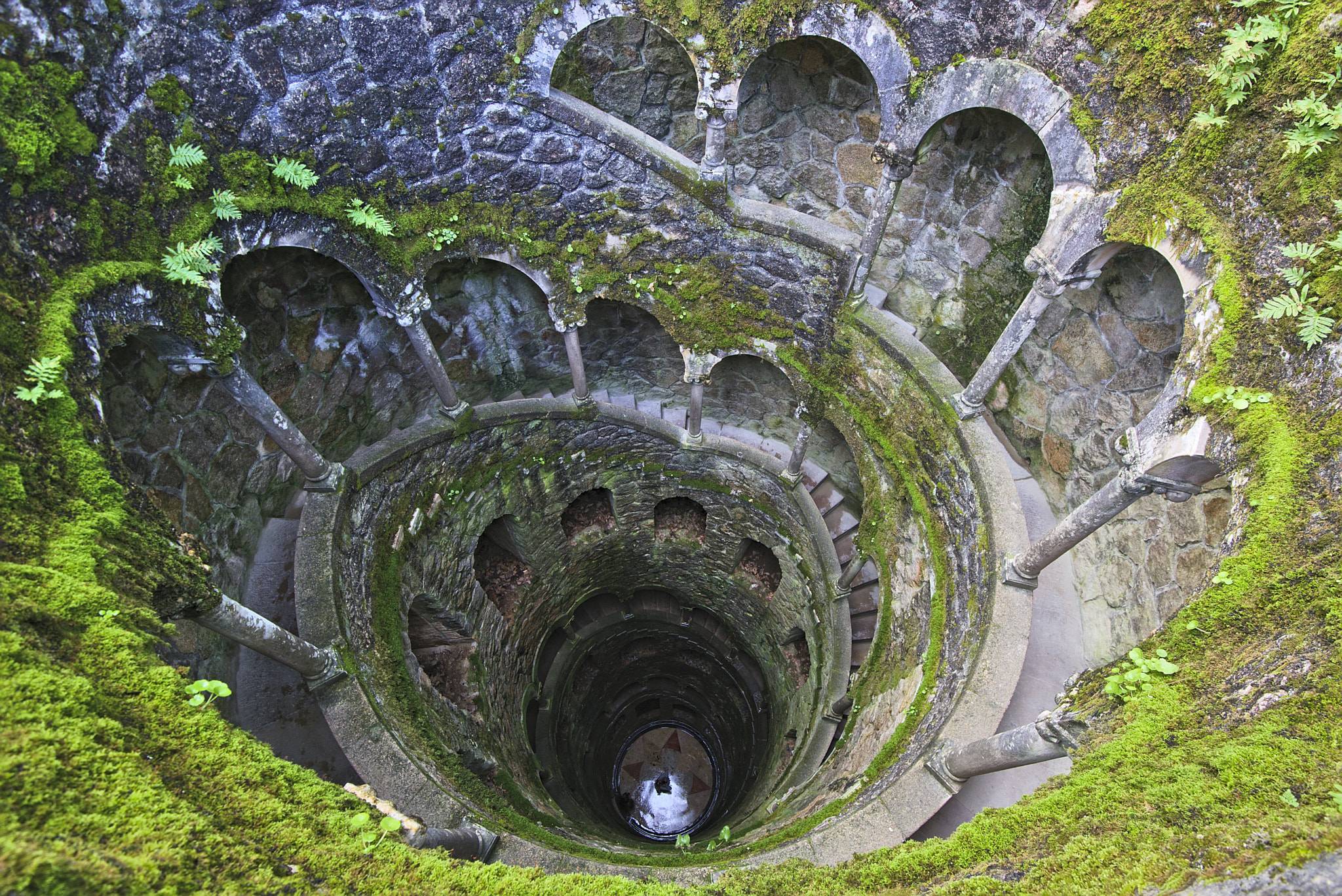
The construction of the wells utilized traditional masonry techniques. The stonework is intricate, showcasing the high level of craftsmanship of the period. The wells are connected to each other and to other parts of the estate by a series of tunnels. These tunnels add to the enigmatic atmosphere of the estate.
Architecturally, the wells are a marvel of engineering. They were built to withstand the weight of the earth above while providing a unique and mystical experience below ground. The cool, damp environment of the wells contrasts with the lush, verdant landscape of the estate above.
The Initiation Wells are a central feature of the Quinta da Regaleira estate. They are a prime example of the Romanticism that influenced the architecture and landscaping of the property. The wells, along with the ornate palace and the expansive gardens, create a cohesive narrative that reflects the owner’s fascination with mysticism and the occult.
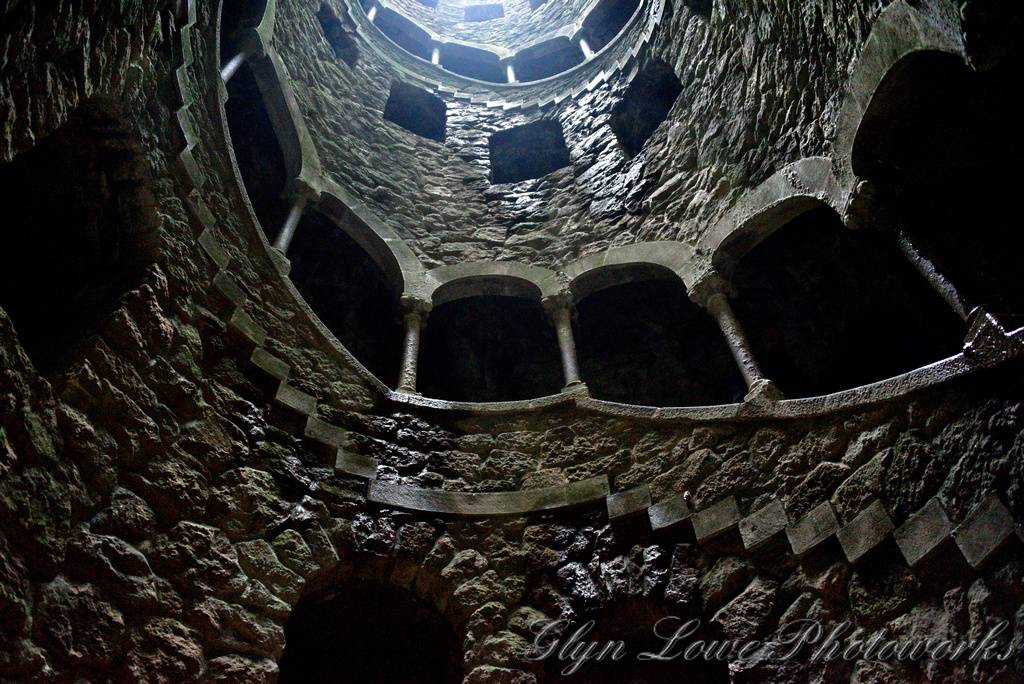
Theories and Interpretations
There are numerous theories and interpretations surrounding the Initiation Wells of Quinta da Regaleira. Some believe the wells served as a ceremonial place for initiation rites into the mysteries of the earth. Others speculate that they were used for Tarot initiation rites, which would explain the symbolic significance of the number of steps and landings.
The connection to the Knights Templar and Freemasonry is one of the most discussed aspects of the wells. The symbols found throughout the estate suggest that Carvalho Monteiro had a deep interest in these organizations. The wells may have been used for Masonic initiation ceremonies, which are known for their secrecy and complexity.
Despite the many theories, there is no definitive evidence that confirms the exact purpose of the wells. This lack of concrete information has led to a wealth of speculation. The mysterious nature of the wells only adds to their allure and the fascination they hold for visitors and scholars alike.
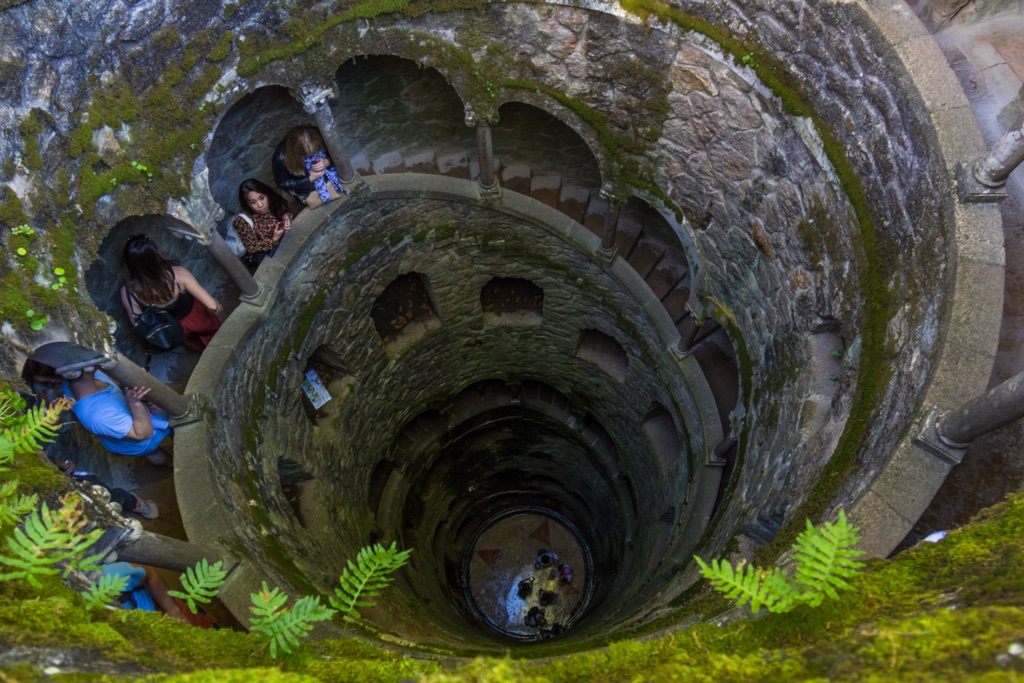
Historical records do not provide clear answers about the wells’ use. This has led to a reliance on interpretation and matching the estate’s symbols to known ideologies and practices of the time. The wells are a physical manifestation of Monteiro’s personal beliefs and interests, which were steeped in the esoteric and the mystical.
Dating of the wells has been carried out, confirming their construction at the turn of the 20th century. The methods used for dating include historical documentation and architectural analysis. These methods have helped to place the wells within the context of the Romantic period and the personal history of Carvalho Monteiro.
At a glance
- Country: Portugal
- Civilization: Modern, 20th-century Portuguese
- Age: Early 20th century (1904-1910 AD)

